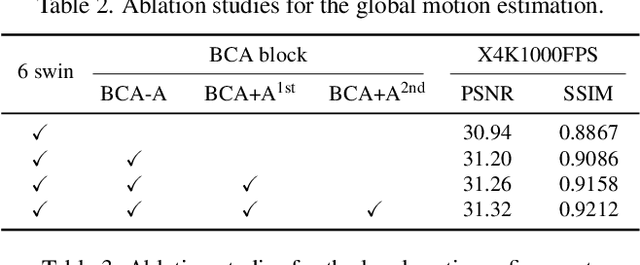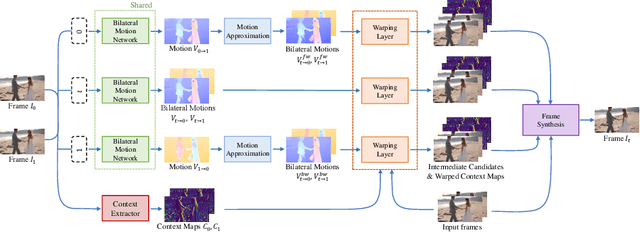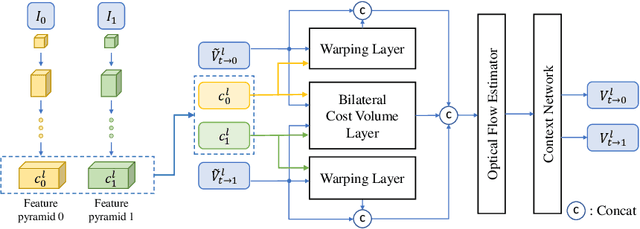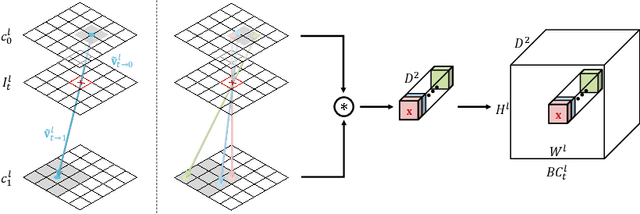Junheum Park
BiFormer: Learning Bilateral Motion Estimation via Bilateral Transformer for 4K Video Frame Interpolation
Apr 05, 2023



Abstract:A novel 4K video frame interpolator based on bilateral transformer (BiFormer) is proposed in this paper, which performs three steps: global motion estimation, local motion refinement, and frame synthesis. First, in global motion estimation, we predict symmetric bilateral motion fields at a coarse scale. To this end, we propose BiFormer, the first transformer-based bilateral motion estimator. Second, we refine the global motion fields efficiently using blockwise bilateral cost volumes (BBCVs). Third, we warp the input frames using the refined motion fields and blend them to synthesize an intermediate frame. Extensive experiments demonstrate that the proposed BiFormer algorithm achieves excellent interpolation performance on 4K datasets. The source codes are available at https://github.com/JunHeum/BiFormer.
Asymmetric Bilateral Motion Estimation for Video Frame Interpolation
Aug 15, 2021



Abstract:We propose a novel video frame interpolation algorithm based on asymmetric bilateral motion estimation (ABME), which synthesizes an intermediate frame between two input frames. First, we predict symmetric bilateral motion fields to interpolate an anchor frame. Second, we estimate asymmetric bilateral motions fields from the anchor frame to the input frames. Third, we use the asymmetric fields to warp the input frames backward and reconstruct the intermediate frame. Last, to refine the intermediate frame, we develop a new synthesis network that generates a set of dynamic filters and a residual frame using local and global information. Experimental results show that the proposed algorithm achieves excellent performance on various datasets. The source codes and pretrained models are available at https://github.com/JunHeum/ABME.
BMBC:Bilateral Motion Estimation with Bilateral Cost Volume for Video Interpolation
Jul 17, 2020



Abstract:Video interpolation increases the temporal resolution of a video sequence by synthesizing intermediate frames between two consecutive frames. We propose a novel deep-learning-based video interpolation algorithm based on bilateral motion estimation. First, we develop the bilateral motion network with the bilateral cost volume to estimate bilateral motions accurately. Then, we approximate bi-directional motions to predict a different kind of bilateral motions. We then warp the two input frames using the estimated bilateral motions. Next, we develop the dynamic filter generation network to yield dynamic blending filters. Finally, we combine the warped frames using the dynamic blending filters to generate intermediate frames. Experimental results show that the proposed algorithm outperforms the state-of-the-art video interpolation algorithms on several benchmark datasets.
 Add to Chrome
Add to Chrome Add to Firefox
Add to Firefox Add to Edge
Add to Edge